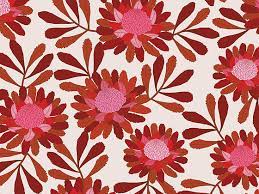The Art of Design: Transforming Ideas into Reality
Design is a powerful tool that shapes our world, from the products we use to the spaces we inhabit. It is the creative process of turning ideas and concepts into tangible forms that enhance functionality, aesthetics, and user experience. Design encompasses a wide range of disciplines, including graphic design, industrial design, fashion design, interior design, and more.
The Importance of Design
Good design goes beyond just making things look visually appealing. It considers usability, ergonomics, sustainability, and cultural relevance. A well-designed product not only looks beautiful but also functions seamlessly and improves the lives of its users. In today’s competitive market, design has become a key differentiator for businesses looking to stand out and connect with their target audience.
The Process of Design
Design is a collaborative process that involves research, ideation, prototyping, testing, and refinement. Designers draw inspiration from various sources – nature, art, technology – to create innovative solutions to complex problems. They use tools such as sketches, digital software, 3D modelling techniques to bring their ideas to life.
The Impact of Design on Society
Design has the power to influence how we interact with our environment and each other. It can evoke emotions, trigger memories, and shape cultural trends. From iconic logos that symbolise brands to sustainable architecture that promotes eco-friendly living – design has a profound impact on society’s values and behaviours.
Conclusion
In essence, design is about creativity, innovation, and problem-solving. It is a dynamic field that continues to evolve with changing technologies and trends. Whether it’s creating a user-friendly app or designing a sustainable building – good design has the ability to inspire change and improve lives.
Understanding Design: Its Importance, Impact, Disciplines, Tools, and Role in Branding
- What is design and why is it important?
- How does design impact user experience?
- What are the different types of design disciplines?
- What tools do designers use in the design process?
- How can good design enhance a brand’s identity?
What is design and why is it important?
Design is the process of transforming ideas into tangible forms that enhance functionality, aesthetics, and user experience. It is a creative endeavour that spans various disciplines such as graphic design, industrial design, and interior design. Design is crucial because it goes beyond mere aesthetics – it considers usability, sustainability, and cultural relevance. Good design not only makes things visually appealing but also improves how we interact with products and spaces. In today’s competitive landscape, design plays a vital role in differentiating businesses and creating meaningful connections with consumers. Ultimately, design shapes our world and influences how we experience and navigate the environment around us.
How does design impact user experience?
Design plays a crucial role in shaping user experience by influencing how users interact with products or services. A well-thought-out design enhances usability, functionality, and aesthetics, making the user journey more intuitive and enjoyable. Elements such as layout, colour scheme, typography, and navigation all contribute to creating a seamless and engaging experience for users. By prioritising user-centric design principles, organisations can build trust, loyalty, and satisfaction among their audience, ultimately leading to increased engagement and positive outcomes.
What are the different types of design disciplines?
There are various types of design disciplines that cater to different aspects of our lives and surroundings. Some common design disciplines include graphic design, which focuses on visual communication through typography, imagery, and layout; industrial design, which involves creating products and systems that are functional, ergonomic, and aesthetically pleasing; fashion design, which revolves around creating clothing and accessories that reflect current trends and personal style; interior design, which aims to enhance the functionality and aesthetics of indoor spaces; and user experience (UX) design, which focuses on creating seamless interactions between users and digital interfaces. Each design discipline has its unique principles, processes, and applications that contribute to shaping our everyday experiences.
What tools do designers use in the design process?
Designers use a variety of tools throughout the design process to bring their creative ideas to life. These tools include both traditional and digital mediums such as sketchbooks, pencils, markers, and drawing tablets for initial concept sketches and ideation. As the design progresses, designers often utilise software like Adobe Creative Suite (Photoshop, Illustrator, InDesign), Sketch, Figma, or CAD programs for detailed digital mockups and prototypes. Additionally, tools such as 3D modelling software and prototyping tools help designers visualise and test their designs in a realistic manner before final implementation. Collaboration platforms like Slack or Trello also play a crucial role in facilitating communication and project management among design teams. By leveraging these diverse tools effectively, designers can streamline their workflow and create innovative solutions that meet the needs of their clients and end-users.
How can good design enhance a brand’s identity?
Good design plays a crucial role in enhancing a brand’s identity by visually communicating its values, personality, and unique selling points to the target audience. A well-crafted design can create a strong first impression, establish credibility, and differentiate the brand from competitors. Consistent use of design elements such as colours, typography, logos, and imagery helps to build brand recognition and loyalty among consumers. By evoking emotions and conveying a cohesive brand story, good design can leave a lasting impact on customers, shaping their perceptions and influencing their purchasing decisions. Ultimately, good design is essential for building a memorable and impactful brand identity that resonates with the target market.

